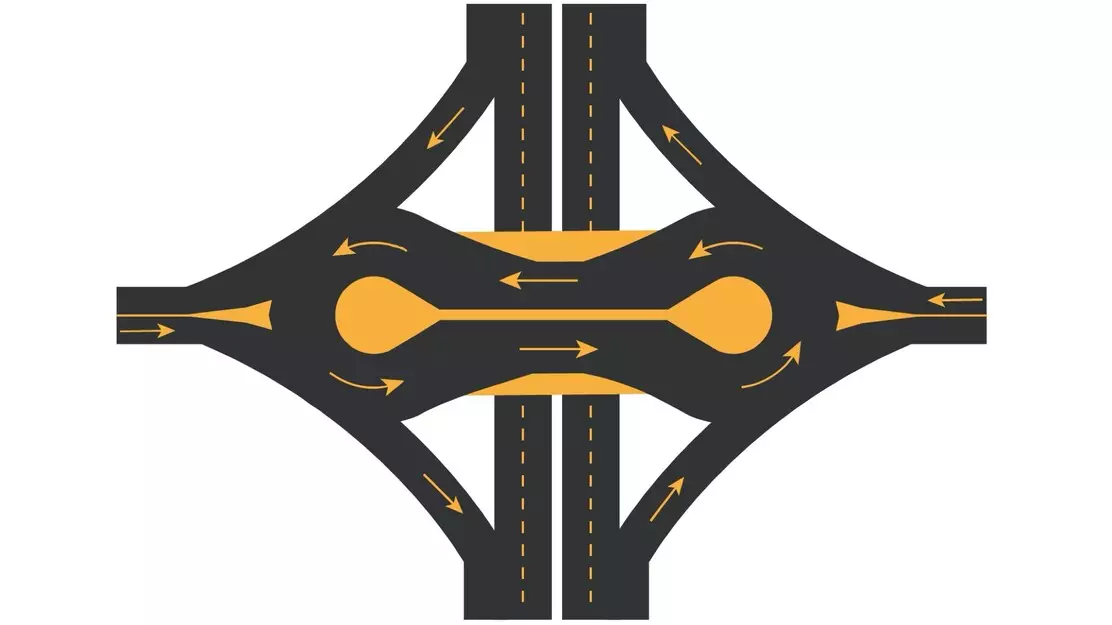“Dog bone” roundabouts? The curious name comes from its shape which, when viewed from above, takes the classic shape of a… “dog bone”, as we are used to seeing in cartoons or toys. Also, due to their shape, they can be called a double “water drop” roundabout.
Essentially the “dog bone” rotunda results from the fusion of two rotundas that never reach a complete circle, both being joined by two ways, preferably physically separated, functioning as a single rotunda, but as if it had been compressed in half.
It is a solution that is proving to be very effective both in increasing the fluidity of traffic and in reducing collisions between vehicles. See how it works in this diagram:

In the first case, the one with greater traffic flow, avoids the use of traffic lights to regulate traffic, contributes to a reduction in vehicle speed and to a more effective separation of traffic that converges to the center of the intersection. If it is necessary to reverse the direction of travel, drivers are obliged to always go to the second roundabout.
In the second case, the reduction in collisions between vehicles, it is precisely due to this separation of traffic, preventing frontal collisions (at the connection between the two roundabouts) and avoiding an increase in side collisions (vehicle that hits the side of another vehicle),
That's what found the city of Carmel, in the state of Indiana in the USA (immediately north of Indianapolis), which is already known for the number (there are already 138 and will not stop here) and variety of roundabouts it has already built.
Carmel already has several “dog bone” roundabouts in operation — like the one in the featured video — that have taken the place of other types of intersections, under and over the city's main thoroughfare that crosses it and practically divides it in half.
The IIHS (Insurance Institute for Highway Safety or the Insurance Institute for Highway Safety) conducted a study comparing the number of accidents before and after construction of “dog bone” roundabouts (with two years of accident data prior to construction) in Carmel. The results are enlightening: 63% less in the total number of accidents and 84% less in the number of injuries involving injuries.
The “dog bone” roundabouts are not only found in the US, but it appears to be the fastest adopting country. They can also be applied in other contexts, other than serving as an intersection at the entrance/exit of a highway, as shown in the next video:
